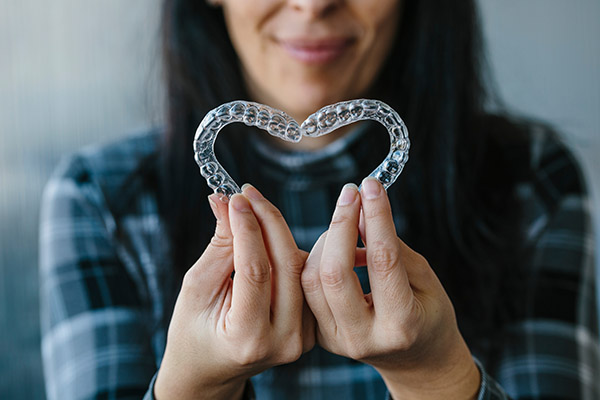 Invisalign® is a system of transparent aligners that are custom-made to fit a person's teeth. Like braces, it corrects alignment by delivering different levels of pressure to individual teeth. Since everyone has a unique smile, you will need a custom-made pair of Invisalign clear aligners. This article provides information on how clear aligners are custom-made for patients.
Invisalign® is a system of transparent aligners that are custom-made to fit a person's teeth. Like braces, it corrects alignment by delivering different levels of pressure to individual teeth. Since everyone has a unique smile, you will need a custom-made pair of Invisalign clear aligners. This article provides information on how clear aligners are custom-made for patients.
Getting fitted with custom Invisalign aligners
The shape of the aligners allows them to induce force on the misaligned teeth, causing them to move into a straighter position. Clear aligners like Invisalign require an adjustment phase, as with conventional metal braces. As the aligners begin to function, a person can anticipate feeling some pressure. The patient becomes used to their aligners gradually, and the pain and discomfort subside.
The dentist will evaluate a patient's teeth to determine the best approach to teeth straightening. If a patient opts for Invisalign instead of traditional orthodontic procedures, the dental professional will:
Take an impression of the patient’s teeth
In some cases, the dentist may ask the patient to bite down on something that looks like putty. They will create a cast of the patient's teeth from the resultant mold. Most dentists nowadays take a digital 3D scan of the patient's mouth using an optical camera.
Design the Invisalign trays
The 3D scan from the camera will be sent into software that will create a model of the patient's mouth. The dentist will use the model to plan how each pair of trays will move each tooth to its ideal position. The trays will be custom-made to suit a patient's specific dental configuration.
Construct the Invisalign trays
The impressions taken by the dentist will be utilized to manufacture and sculpt the Invisalign trays in a dental lab. The aligner-making machine operates similarly to a 3D printer. It prints or mills a set of Invisalign trays based on the dentist's designs. There may be five or six sets of trays in each Invisalign series.
Make an appointment with the patient for a fitting
The dentist will contact the patient for a fitting when the aligners are available. The patient will be asked about how comfortable the aligners are. The dentist will make any necessary modifications to make the device more comfortable for the patient. They will also instruct the patient on how to use and care for the aligners. The aligners are typically worn for 22 hours each day. The patient will need to transition to a fresh set of aligner trays after a while, typically two weeks.
Ready for straighter teeth with Invisalign?
When you visit the dental office about straightening your teeth, the dentist will assist you in achieving the smile of your dreams. You are welcome to call or visit at any time. If Invisalign aligners are recommended, you will learn about all the details you need regarding treatment during your appointment.
Request an appointment or call Valley Family Dental Group at 562-450-1257 for an appointment in our Downey office.
Related Posts
Invisalign® is a popular orthodontic treatment involving the use of clear aligners. This is a dental alignment treatment suitable for responsible teens. Going through this age range involves awkwardness, especially when it comes to looks. Teens need support in this area. Metal braces will not be a good choice. If you want to know why…
Every patient's Invisalign® treatment regimen is unique. However, the way a treatment plan is developed is comparable. This article describes the process of developing a treatment plan for Invisalign. Your dentist will design a personalized Invisalign treatment plan tailored to your situation.Ahead of any Invisalign treatment, the dentist must do an exam and x-rays to…
If you have had braces in the past, you may want to try Invisalign® to correct any crooked teeth that shifted back. Read on to learn more. Fortunately, you can receive Invisalign aligners despite having already had braces. Interestingly, those who have to undergo teeth straightening for a second time usually go for Invisalign instead…
